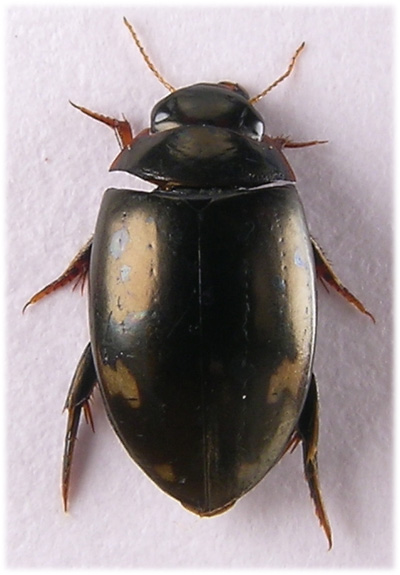
7-8mm. Antennae clear yellow with last segment black at apex. Palpi red with apical half of terminal segment dark. Head black with 2 foveate punctures on clypeus inside front margins of eyes, sometimes with 2 orange ill-defined orange macula between posterior margin of eyes. Pronotum dark with lateral margins and sometimes base narrowly red, indistinctly punctate behind front margin and laterally before hind margin. Elytra each with 3 rows of weakly setose punctures, characteristically marked with transluscent cream 'N' shaped macula laterally behind middle and another, usually obscurely round or broadly 'U' shaped, subapically. Two other common species have distinct yellow subapical marks; A.bipustulatus and A.guttatus, both of which are at least 9mm and have differently shaped marks. Epipleurs dark, strongly narrowing posteriorly from level of first abdominal sternite. Upper surface dark, often with bronze lustre which can be very distinct in the pond net. Shining with dense granulate microsculpture throughout, indistinctly visible at X20. Upper surface not dimorphic, male basal protarsal segments dilated with suction hairs beneath. Front legs red, middle legs darker and hind legs pitchy red or black. Hind femur with small apical 'comb' clearly visible from side beneath tibiae in normal setting. Hind tibiae short, about twice as long as broad, longest terminal spur more than half its length. All claws more or less equal in length.
This description was taken from 11 Watford specimens taken between June and August 2007.
Description from 11 Watford specimens at X20
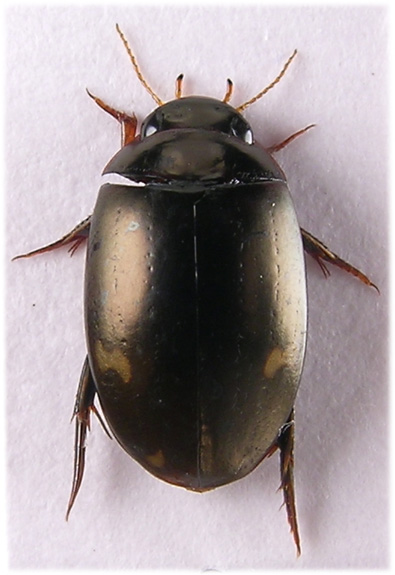
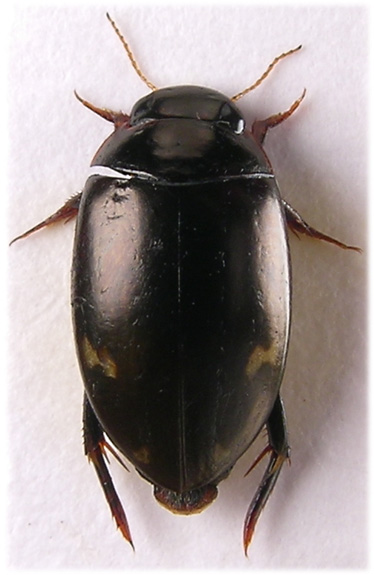

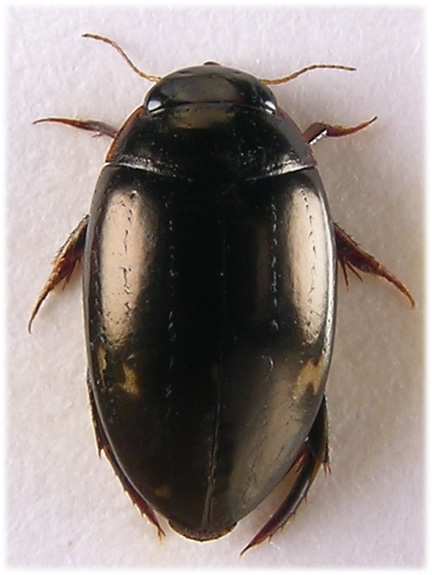
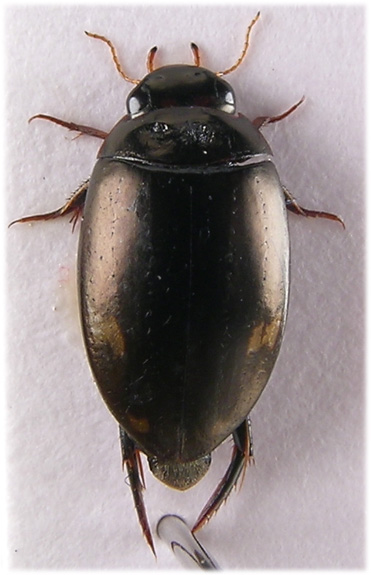
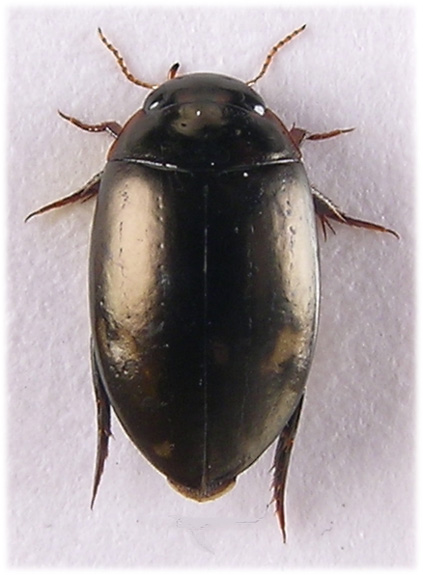
Home